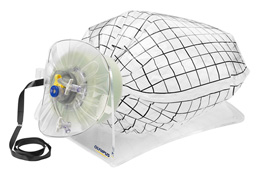Understanding Laparoscopic Supracervical Hysterectomy Options
In 2014, the FDA issued a warning about a device called the "electronic power morcellator" – a device that allowed physicians to use minimally invasive surgical techniques for laparoscopic supracervical hysterectomies. Morcellation, or the breaking up of tissue, allowed surgeons to remove tissue through a very small incision. The FDA's concern focused on possible contamination of the abdominal area by the tissue being removed. Because of the warning, the laparoscopic procedure was no longer available to some women and the number of open hysterectomies increased dramatically in the US. For many women, this meant a return to the procedure of our grandmother's time – complete with a longer recovery, more pain, and more scarring.
About Hysterectomies
Hysterectomy is a common procedure affecting millions of women and one of the most common procedures performed in the USA. The three most common reasons are fibroids, pelvic pain, and vaginal bleeding.
Fibroids, a common condition found in about 20 - 30% of women, can be devastating and significantly interrupt one’s life. Pelvic pain equally is a common cause of hysterectomy. This may overlap with fibroids, as many women with fibroids have pelvic pain. However, women can experience pelvic pain independent of fibroids. Endometriosis is also a very common ailment in women. These three issues account for the majority of benign hysterectomies.
Options for Hysterectomies
In the past, women who wanted to maintain their cervix AND have a minimally invasive surgery with a 6 day recovery had lost their option to have a laparoscopic procedure. Because of the advantage laparoscopic surgeries provides to his patients, Dr. Ashford looked for a solution. We're pleased to tell you there's great news regarding the return of Laparoscopic Supracervical Hysterectomy.
Types of Hysterectomy Procedures
There are 3 different types of hysterectomy procedures currently performed in the US. Based on your specific situation and needs, your surgeon will perform either a vaginal hysterectomy, a laparoscopic hysterectomy or an open hysterectomy.
Dr. Ashford has used the laparoscopic procedure for thousands of surgeries with great success. At Minnesota Women's Care, the minimally invasive laparoscopic hysterectomy has been favored for 5 important reasons:
- Recovery time is much faster for the patient – allowing a woman to get back to her busy life with a minimal delay.
- Recovery is much easier for most women because it is far less painful.
- There is a significant reduction in blood loss over other procedures.
- The complication rate for the laparoscopic procedure is much lower than it is for an open hysterectomy.
- There is very little, if any, obvious scarring.
Though Dr. Ashford performs all types of hysterectomies, the majority performed are total laparoscopic hysterectomies.
An Important Advancement
In 2015, the FDA approved the use of a new device called the PneumoLiner – an abdominal bag used to contain the tissue during morcellation. Because it directly addresses the areas of concern noted by the FDA in 2014, this new product now allows physicians to use the laparoscopic hysterectomy procedure again in situations where it is appropriate.
What our patients say:
How the Pneumoliner Works

During surgery, Dr. Ashford inserts the PneumoLiner bag into the surgical area through the small incision and the bag is then inflated. The uterus is placed inside the bag before morcellation begins. The bag then provides a barrier between the uterus and other targeted tissue and the abdominal cavity during morcellation which eliminates the concern the FDA expressed in 2014 about tissue contamination. Once morcellation is complete, the bag is securely closed and removed through the same small incision for disposal.
It's likely you have not heard about the PneumoLiner because it's very new. Physicians must undergo specific training to be able to use the procedure. It is a product that is significant to doctors who believe in minimally invasive surgeries. In other words, for Dr. Ashford – a firm believer in using surgical methods that decrease recovery time – the PneumoLiner is an essential tool.
DR. MELVIN ASHFORD: LEADING THE WAY
Dr. Ashford was trained to use the PneumoLiner by the inventor before training sessions became available in the US. He performed one of the first surgeries in the country using the product and was impressed with the results. His patient experienced less pain, less blood loss and was back to work in a week. It is exactly the kind of outcome Dr. Ashford seeks for his patients.
Since that time, Dr. Ashford has continued to use the PneumoLiner and to provide educational resources for other physicians and patients who are interested in the product.
VIDEO:
View a Laparoscopic Supracervical Hysterectomy (LSH) using the PneumoLiner system
VIDEO:
Dr. Ashford in his own words – what the PneumoLiner advancement means to his patients and their surgical options.
